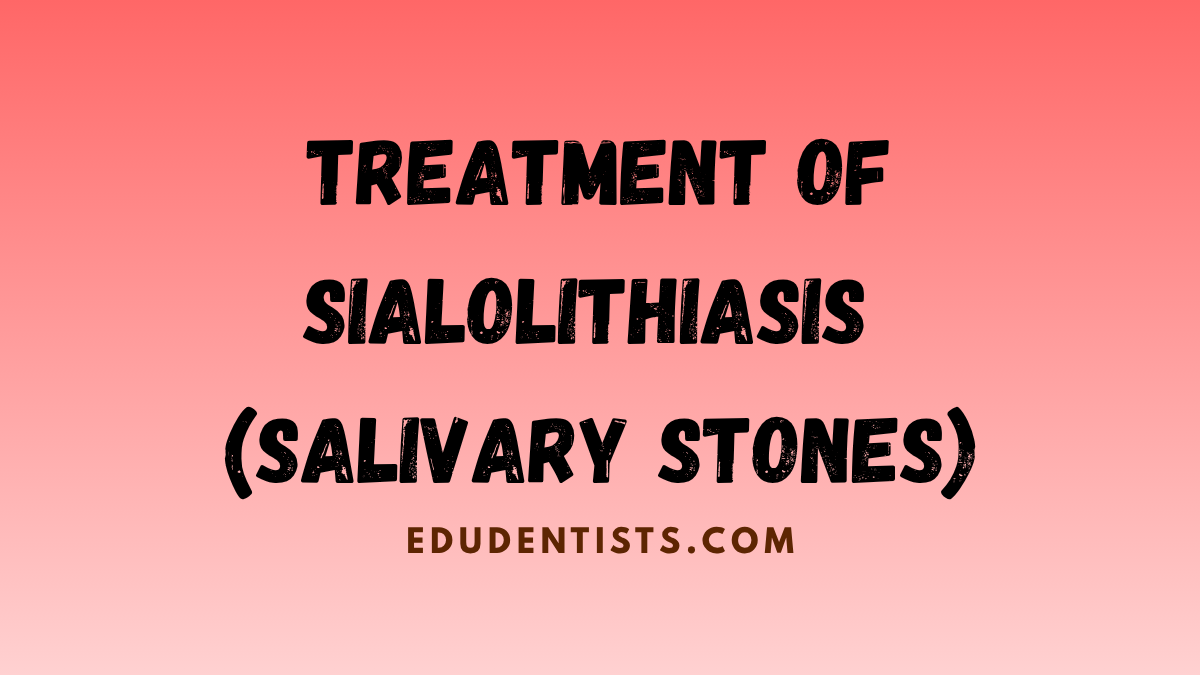
Treatment of Sialolithiasis (Salivary Stones)
Management of sialolithiasis aims to alleviate symptoms, restore normal salivary flow, and preserve gland function. Treatment options vary depending on the size, location, and number of stones, as well as the severity of glandular involvement.
Supportive Management During the Acute Phase
During episodes of acute sialadenitis (inflammation of the salivary gland associated with sialolithiasis), initial treatment is primarily supportive and includes:
- Analgesics to manage pain
- Hydration to promote salivary flow
- Antibiotics in cases of suspected or confirmed bacterial infection
- Antipyretics for fever control
- Sialogogues (agents that stimulate salivary secretion)
- Gland massage and warm compresses to encourage stone movement and drainage
If a stone is located near the ductal orifice, it may be removed via manual expression (milking the gland). However, deeper stones often require more advanced techniques.
Minimally Invasive and Surgical Interventions
1. Sialendoscopy
Sialendoscopy has become the first-line intervention in many cases and focuses on gland-preserving, endoscopic techniques. It is particularly effective for:
- Stones ≤4–5 mm in diameter
- Freely mobile stones located within the main ductal system
Procedure Highlights:
- Duct dilation or papillotomy is often performed to enlarge the ductal orifice.
- Specialized instruments (e.g., Dormia baskets, graspers, laser fibers) are introduced via the endoscope.
- Saline irrigation and sometimes steroid instillation are used to clear residual debris and reduce inflammation.
- Postoperative ductal stenting may be applied to maintain duct patency and promote healing.
2. Extracorporeal Shock Wave Lithotripsy (ESWL)
ESWL is a non-invasive option that uses high-energy shock waves to fragment salivary stones into smaller pieces, allowing them to pass naturally with saliva.
Advantages:
- Can treat stones of any size or location
- Avoids surgical incisions
Limitations:
- Often requires multiple treatment sessions
- Contraindicated in:
- Complete ductal stenosis
- Pregnancy
- Acute infections of the head and neck
- Presence of cardiac pacemakers
⚠️ Note: ESWL is currently not FDA-approved for salivary stone treatment in the United States.
Surgical Treatment
Sialoadenectomy
When gland-preserving techniques fail or when there is significant gland destruction or fixed intraparenchymal stones, surgical removal of the gland (sialoadenectomy) becomes necessary.
Indications:
- Large or impacted stones
- Recurrent sialadenitis
- Failed minimally invasive approaches
Common Surgical Procedures:
- Superficial parotidectomy (for parotid stones)
- Transcervical submandibulectomy (for submandibular stones)
Potential Complications
- Facial nerve injury:
- Transient: 2%–76%
- Permanent: 1%–3%
- Greater auricular nerve sensory loss: 2%–100%
- Frey’s syndrome (gustatory sweating): 8%–33%
- Marginal mandibular nerve injury:
- Temporary: 1%–2%
- Permanent: 1%–8%
- Hypoglossal nerve palsy:
- Temporary: 1%–2%
- Permanent: 3%
- Lingual nerve injury:
- Temporary: 2%–6%
- Permanent: 2%
- Other risks: Hematomas, salivary fistulas, sialoceles, infections, scarring, and complications from residual stones
Conclusion
The management of sialolithiasis has evolved significantly with the rise of minimally invasive techniques like sialendoscopy and ESWL, which prioritize gland preservation and patient comfort. However, in complex or refractory cases, surgical intervention remains a vital option. Early diagnosis and individualized treatment planning are essential to achieving the best outcomes and avoiding long-term complications.